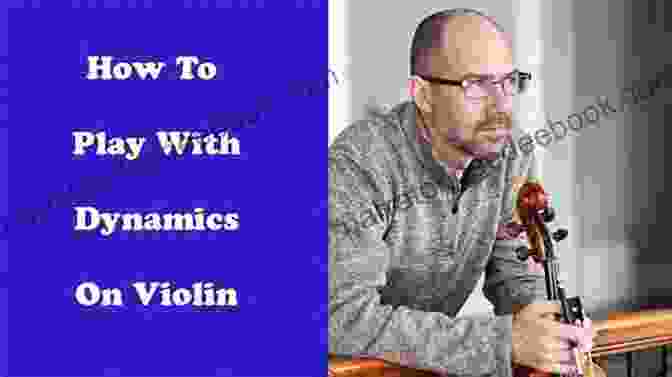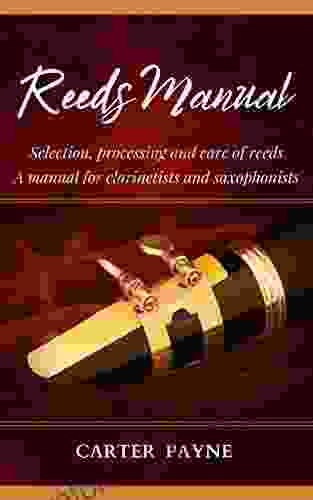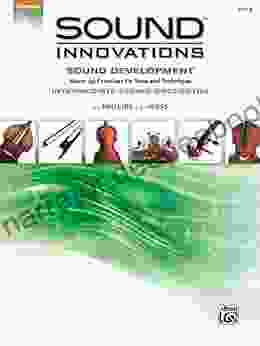Sound Development Intermediate For Viola: Achieving Optimal Resonance and Articulation

The intermediate level marks a significant milestone in the musical journey of any viola player. As you progress beyond the foundational techniques, the focus shifts towards refining your sound and developing a more expressive and nuanced playing style. Sound development becomes paramount, as it directly influences the beauty and effectiveness of your musical interpretations.
This comprehensive guide will delve into the intricacies of sound development for intermediate viola players. We will explore proven techniques to enhance resonance, improve articulation, and cultivate a rich and expressive sound. By embracing these principles and incorporating them into your daily practice routine, you can unlock the full potential of your instrument and take your viola playing to the next level.
4.8 out of 5
| Language | : | English |
| File size | : | 5945 KB |
| Screen Reader | : | Supported |
| Print length | : | 56 pages |
Resonance: The Foundation of a Rich Sound
Resonance is the ability of the viola to produce a full, vibrant sound. It is achieved when the instrument's body and strings vibrate sympathetically, amplifying the sound waves and creating a rich and resonant tone. Enhancing resonance is crucial for viola players, as it allows for greater projection, expressiveness, and control.
1. Proper Bowing Technique
The bowing technique plays a vital role in sound production. For optimal resonance, focus on using a smooth, fluid bow stroke. Avoid excessive pressure or tension, as this can hinder the natural vibration of the strings. Aim for a relaxed grip and a consistent bow speed, maintaining contact with the strings throughout the stroke.

2. String Height and Pressure
The height of the strings above the fingerboard and the pressure applied while fingering can significantly impact resonance. Experiment with different string heights and finger pressure to find the optimal balance. Generally, lower string heights promote greater resonance, but excessive pressure can dampen the strings.
3. Fingerboard Contact
The contact between the fingers and the fingerboard plays a crucial role in sound production. Aim for a firm but relaxed grip, avoiding any unnecessary tension. The finger should contact the string perpendicularly, directly above the desired pitch. This ensures clear intonation and allows for optimal string vibration.
Articulation: Precision and Clarity
Articulation refers to the manner in which notes are started and stopped. It is an essential aspect of viola playing, as it brings clarity, precision, and expression to the music. Developing refined articulation techniques will enable you to convey musical ideas with greater clarity and control.
1. Bow Placement and Speed
The placement of the bow on the string and the speed of the bow stroke determine the articulation of the note. For a clear and precise attack, place the bow on the string at a perpendicular angle and use a brisk, controlled stroke. Conversely, for a smoother, more legato sound, place the bow on the string at a slight angle and use a slower, more gradual stroke.

2. Finger Placement and Pressure
The placement and pressure of the fingers on the strings directly affect articulation. For a crisp and defined attack, use a firm finger placement and apply a moderate amount of pressure. Conversely, for a softer, more subtle articulation, use a lighter finger placement and apply less pressure.
3. Detaché, Martelé, and Spiccato
Mastering different articulation techniques is essential for a versatile viola player. Detaché is the most basic articulation, involving a clear and separate stroke for each note. Martelé is a more forceful and accented articulation, where the note is attacked with a strong, downward bow stroke. Spiccato is a bouncing articulation, where the bow is lifted off the string after each stroke, producing a lively and rhythmic effect.
Expression: The Heart of Musical Interpretation
Beyond technical proficiency, sound development for viola players involves cultivating expressiveness. Expression is the ability to convey musical ideas and emotions through the subtle nuances of sound. By mastering the techniques of resonance and articulation, you can create a rich and expressive sound that captivates audiences.
1. Dynamic Control
Dynamic control refers to the ability to vary the volume and intensity of the sound. Master the art of playing with a wide range of dynamics, from soft and delicate to loud and powerful. Dynamic contrasts add depth and emotion to your playing, allowing you to convey the full range of musical expression.

2. Vibrato
Vibrato is a technique that involves a slight, oscillating variation in pitch. Applied judiciously, vibrato adds warmth and expressiveness to the sound. Experiment with different vibrato speeds and widths to create subtle variations in sound and convey musical emotions.
3. Fingered Ornaments
Fingered ornaments, such as trills, turns, and mordents, add embellishment and nuance to viola playing. These techniques require precise finger coordination and control. Mastering fingered ornaments will enhance your technical skills and allow you to express intricate musical ideas.
Practice Tips for Sound Development
Consistent practice is key to developing your viola sound. Here are some tips to incorporate into your daily practice routine:
- Long Tones: Practice sustaining long notes to develop resonance and control.
- Scales and Arpeggios: Practice scales and arpeggios with different bowings and articulations to improve intonation and develop a consistent sound.
- Etudes: Incorporate etudes into your practice to work on specific technical aspects of sound development, such as articulation and fingered ornaments.
- Recording and Listening: Record yourself playing and listen back to identify areas for improvement in your sound.
- Seek Guidance: Consult with a qualified viola teacher or mentor for personalized feedback and guidance on sound development.
Sound development is an ongoing journey for intermediate viola players. By embracing the principles of resonance, articulation, and expression, you can cultivate a rich and expressive sound that will elevate your playing to the next level. Consistent practice, experimentation, and guidance from experienced musicians will empower you to unlock the full potential of your viola and captivate audiences with your music.
Remember, the pursuit of sound development is not simply about technical proficiency; it is about finding your own unique musical voice and using it to express your creativity and passion through the viola.
4.8 out of 5
| Language | : | English |
| File size | : | 5945 KB |
| Screen Reader | : | Supported |
| Print length | : | 56 pages |
Do you want to contribute by writing guest posts on this blog?
Please contact us and send us a resume of previous articles that you have written.
 Novel
Novel Chapter
Chapter Story
Story Reader
Reader Paperback
Paperback E-book
E-book Magazine
Magazine Paragraph
Paragraph Sentence
Sentence Shelf
Shelf Bibliography
Bibliography Foreword
Foreword Preface
Preface Synopsis
Synopsis Manuscript
Manuscript Tome
Tome Bestseller
Bestseller Library card
Library card Autobiography
Autobiography Memoir
Memoir Reference
Reference Dictionary
Dictionary Thesaurus
Thesaurus Narrator
Narrator Resolution
Resolution Catalog
Catalog Card Catalog
Card Catalog Archives
Archives Periodicals
Periodicals Research
Research Lending
Lending Academic
Academic Journals
Journals Rare Books
Rare Books Special Collections
Special Collections Literacy
Literacy Storytelling
Storytelling Book Club
Book Club Theory
Theory Textbooks
Textbooks Connor Owens
Connor Owens Bella Merlin
Bella Merlin Franz Werfel
Franz Werfel Cristiana Sogno
Cristiana Sogno John Quinterno
John Quinterno Faith Gardner
Faith Gardner Ar Neal
Ar Neal Willow Rose
Willow Rose Terry Carter
Terry Carter Alex Coombs
Alex Coombs Domingo Villar
Domingo Villar Victoria Honeybourne
Victoria Honeybourne Sheri Overton
Sheri Overton Kathryn Tomasetti
Kathryn Tomasetti Jason Lief
Jason Lief Hillary J Lee
Hillary J Lee Debra Devi
Debra Devi Richard Preston
Richard Preston Anil K Lalwani
Anil K Lalwani Lane Pederson
Lane Pederson
Light bulbAdvertise smarter! Our strategic ad space ensures maximum exposure. Reserve your spot today!
 Ernest HemingwayFollow ·8.3k
Ernest HemingwayFollow ·8.3k Tim ReedFollow ·8.7k
Tim ReedFollow ·8.7k Austin FordFollow ·19.7k
Austin FordFollow ·19.7k Jarrett BlairFollow ·18.2k
Jarrett BlairFollow ·18.2k Dwight BlairFollow ·2.2k
Dwight BlairFollow ·2.2k Bo CoxFollow ·12.8k
Bo CoxFollow ·12.8k Amir SimmonsFollow ·2.1k
Amir SimmonsFollow ·2.1k Howard PowellFollow ·18.3k
Howard PowellFollow ·18.3k

 Abe Mitchell
Abe MitchellUnveiling the Urban Cheating Rich System: A Comprehensive...
In today's complex and ever-evolving urban...

 Preston Simmons
Preston SimmonsSelection, Processing, and Care of Reeds: A Comprehensive...
Reeds are essential...

 Rob Foster
Rob FosterKeeper of the Grail: The Youngest Templar
Prologue: A Sacred...
4.8 out of 5
| Language | : | English |
| File size | : | 5945 KB |
| Screen Reader | : | Supported |
| Print length | : | 56 pages |


















